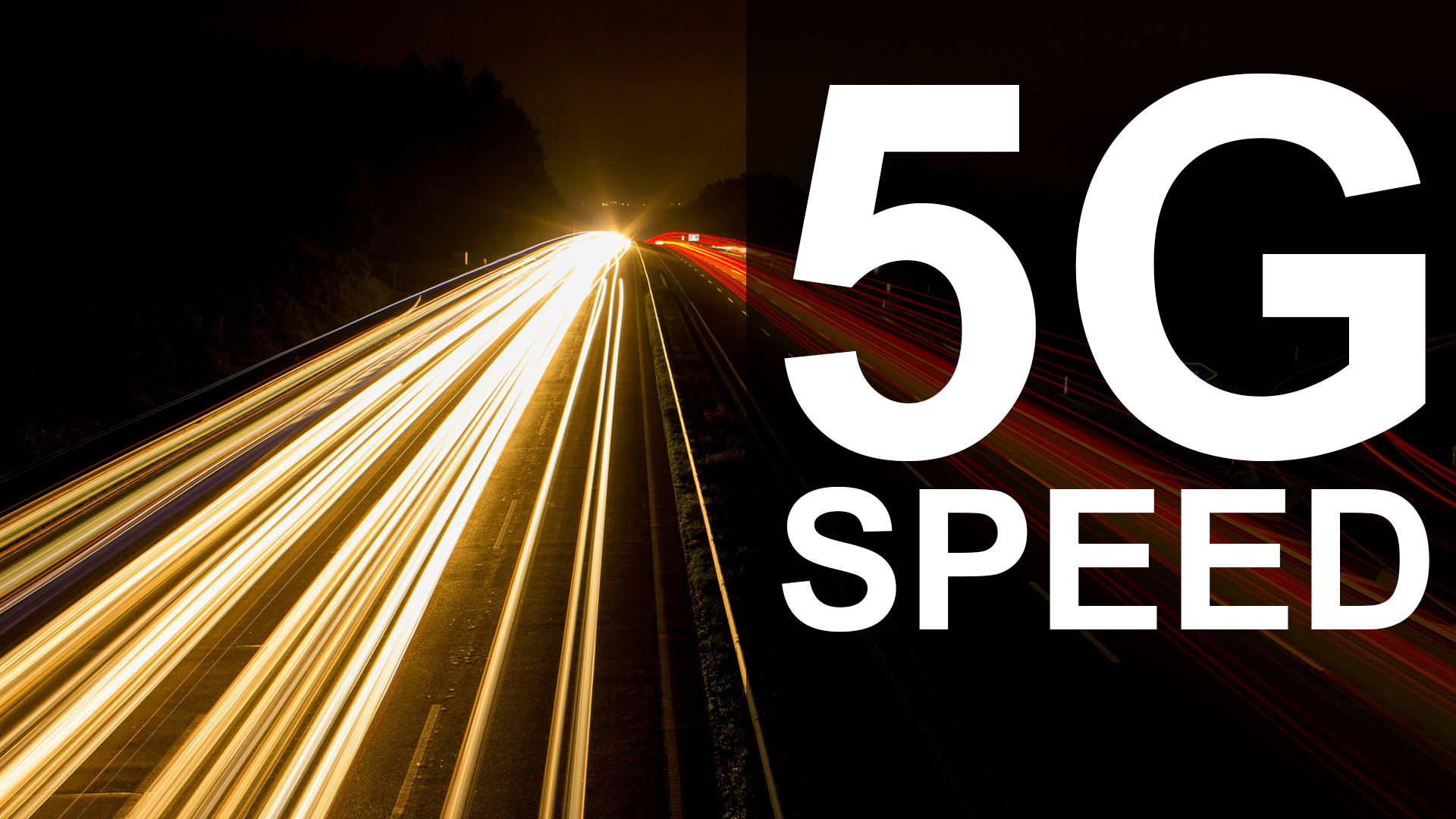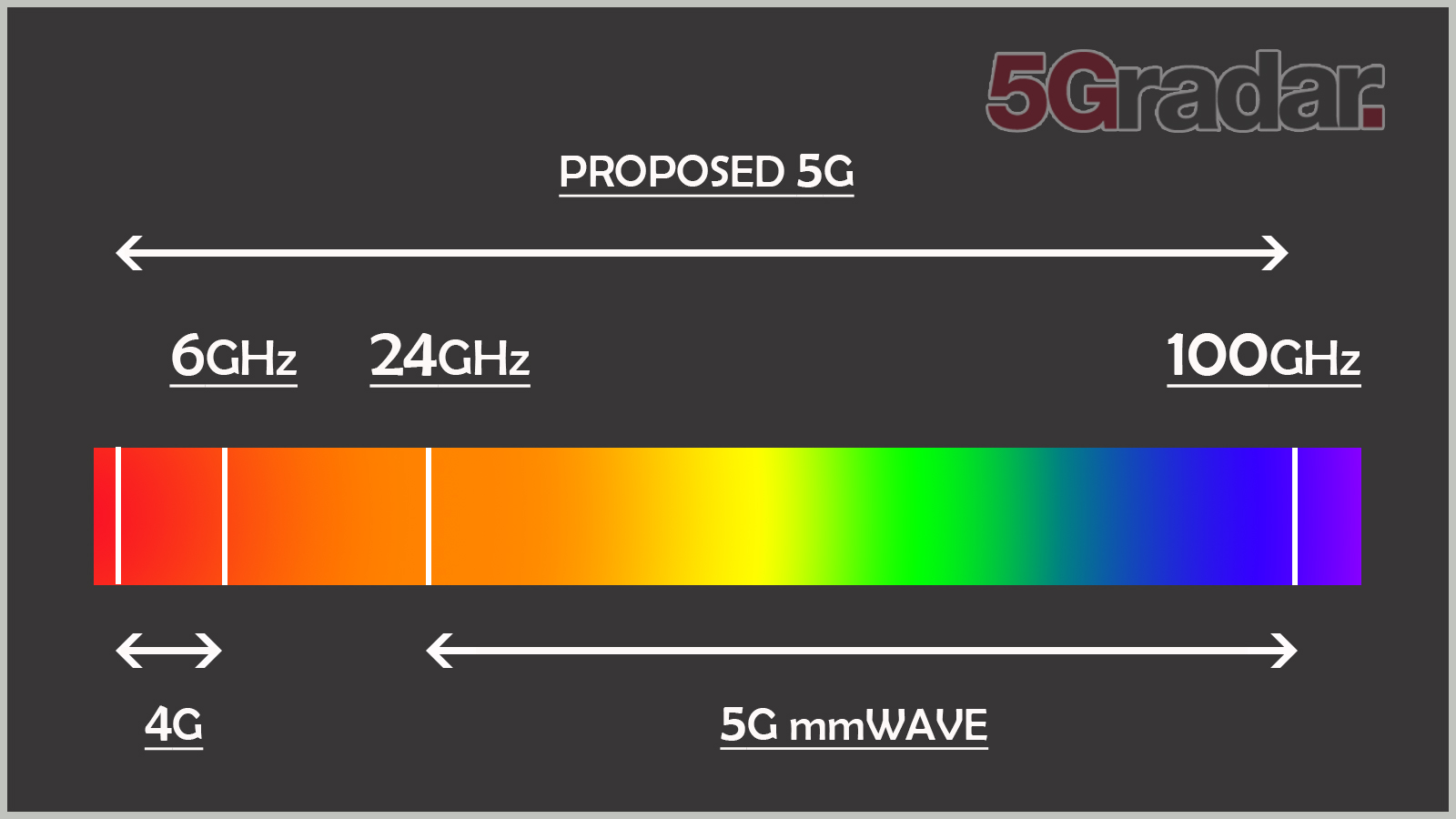The truth about 5G speed
From the theory of 5G speed to the real-world results, we explain what speeds are achievable.

How fast is 5G speed? That's what we're here to answer. But as usual with such a broad question, there are numerous caveats.
It simply isn't possible to give a speed for a 5G network without further qualification. That's because of a few reasons, but primarily that there are different types of 5G.
It's certainly true that confusion still remains over just how fast 5G networks can be. And that's because many networks will evolve over time and will get faster, so the speeds we're seeing on 5G now don't reflect where we'll be in a few years time.
- Discover the best apps for performing a 5G speed test
And, of course, there are variations between networks at present - the faster mmWave technology is being used in the US, for example, but not everywhere. However, in Europe that technology hasn't yet arrived, so the peak speeds in built-up areas are significantly lower than you'd get in mmWave areas in the US.
In our 5G technology explainer, we outlined four of these flavours and in this article, we’re going to delve deeper into the truth behind these 5G speeds – what the terms mean, theoretical versus real-world speeds, and the best apps and services that reveal what 5G speeds you’re getting.
Of course, there are many other factors, too, which is why these early days of 5G are somewhat complicated. Let us explain further.
The different types of 5G speed
There are four significant types of 5G ranging from so-called standard 5G to industrial 5G. We've outlined the key categories in the table below. Read more about these on our 5G technology page.
Get up to speed with 5G, and discover the latest deals, news, and insight!
The speeds achieved on each flavour vary based on the technology and how the data and signals are being used. The deployment of each also varies between networks and, mmWave networks - sometimes referred to as 5G Plus - aren't yet available in the UK and Europe, for example.
One of the key problems is that networks aren't straight-talking about what kind of 5G they are using - primarily to obfuscate the fact they haven't rolled out faster 5G services as yet (some even pretend they're offering a 5G-level of service when, in fact, they're not). All this can be an issue when comparing services, even if we're not really at the stage where 5G speeds would dictate whether you'd stay with a network or not.
The main thing to avoid is anything in the first category - so sub-standard 5G services that actually aren't 5G at all. This is a problem in the US currently with certain services but isn't an issue in the UK.
| 5G flavours | Description |
|---|---|
| 5G Minus or 5GE | Also known by many other names including 4G+, 5GE, 4G LTE Plus, 4G LTE Advanced, 4G LTE-A and even 4.5G, refers to data speeds that are faster than those offered by Gigabit LTE but don’t yet technically reach the minimum requirements to be officially classified as 5G. |
| Standard 5G | This is often referred to as “sub-6GHz” 5G or “everyday 5G” and, as the name suggests, will be the standard, everyday networks consumers will typically use on a daily basis. |
| 5G Plus | Also known as Total 5G or 5G+, this describes the speeds quoted by manufacturers when talking about 5G. These are the maximum achievable in real-world scenarios, rather than in lab tests. |
| Industrial 5G | This refers to the speeds expected to be seen in factories and manufacturing spaces that will power IoT devices by combining standards to boost the maximum. |
5G speed standards
For each iteration of mobile technology, standards are put in place by a group called 3GPP to make sure the technology reaches a certain set of benchmarks, to protect consumers and regulate how the technology is deployed and used.
3GPP is the standards body for mobile telecoms and, as its name suggests, the partnership was originally put together for 3G in the early 1990s. It combines the standards bodies from key areas - such as Europe - and territories - such as South Kore, Japan and China.
Other key partners are organisations that bind together other organisations with an interest in telecoms standards. These include the GSMA - the trade body that joins together mobile operators - and the Wireless Broadband Alliance, intended to further interoperability between Wi-Fi standards.
Within the 5G standards is a minimum speed that must be achieved for an operator to be classified as having a “5G network” and this has been set at 20Gbps downlink and 10Gbps uplink per mobile base station.
The latter point is key. These are the minimum download and upload speeds that must be achievable by a single cell on a network. They aren’t the minimum speeds consumers will see, or should expect, on their devices. In short, this is a standard for networks to achieve, not for consumers or businesses to achieve.
In theory, if you were connected directly to a single cell via a fixed-line and weren’t sharing this connection with any other users, you could reach these speeds. Such speeds have been achieved in lab conditions. In fact, lab tests have hit staggering speeds of 1Tbps.

Of course, in the real world where we’re surrounded by billions of connected devices all receiving and sending signals simultaneously, these maximum speeds are out of reach.
The reality, instead, is that those 20Gbps will instead be split between every device connected to a cell. What’s more, seeing as 5G cells must also be able to support at least 1 million connected devices per square kilometre, chances are these speeds will be greatly fragmented.
As a result, the 5G specifications call for a per-user download speed of 100Mbps and 50Mbps upload. This is close to what is achievable on LTE networks, although while these speeds are rare on LTE, they’re likely to be standard on 5G.
We have seen a phone's speed hit nearly 1Gbps, but that was on site at Vodafone's UK HQ with a 5G-enabled mast at the other end of the car park in front of us. Many mmWave networks tend to give real-world speed readings upwards of 500Mbps while speed readings from the low-band wider coverage in the US (from T-Mobile and AT&T) seem to be coming in around the 200Mbps range. That's still better than we'd have expected.
One thing you will find is that the fastest speeds you currently get on 4G LTE are actually going to become the norm. The performance will improve across the board.
To test performance in fast-moving vehicles, Samsung carried out an experiment last summer by deploying a 5G network at the Korea International Circuit to prove that it was possible to have stable and seamless 5G mmWave performance when you are moving at high-speed. Coincidentally, Samsung believes that motor racing will be a use case for 5G networks in the future, with large amounts of data being transmitted around a circuit wirelessly, not counting the interactions from officials and fans.
Of course, there will always be external factors that affect 5G networks, just as there are with 4G networks. These include how far you are from the cell, whether you’re walking or in a moving vehicle or train, the type of device you’re using, which network provider you’re with and more.
Real-world 5G speeds already vary wildly and will continue to do so, even as the technology matures. As a guide:
- A 4G connection will typically peak at around 20Mbps, although more consistently hits 10Mbps
- On a 5G Minus/4G LTE Advanced network, speeds average around 60Mbps
- Standard 5G (sub-6) is consistently delivering speeds of 100Mbps in real-world scenarios - some indications from the US show this at around 22Mbps.
- 5G Plus (mmWave) pushes this further, with real-world tests revealing average speeds between 300Mbps up to 1Gbps and some even hitting twice this maximum
What is millimeter wave spectrum?
While low-level 700MHz might be useful in spreading 5G to rural locations, it's not suitable for providing the reliable connectivity required in a busy urban location.
High range bands provide huge amounts of capacity across a limited geographical area. So where mmWave is key for 5G rollout is in dense city zones where there's need for high capacity - in other words, there are a lot of devices.
However, mmWave is not without its challenges. The signals don't go that far for one thing. mmWave had previously been shunned for mobile, because of its short-range and narrow wavelengths that were susceptible to atmospheric conditions. An effect, known as rain fade, sees precipitation absorb the radio signal and causes disruption.
Technically, the term mmWave refers to frequencies located between 24GHz and 300GHz located between microwaves and infra-red. These airwaves are currently used for things like scientific research, weapons systems and even police speed guns.
It is considered that the portion between 26GHz and 100MHz offers the greatest opportunity for mobile networks.

However, it is the previously undesirable qualities of mmWave that make it so suitable for 5G.
That's because it depends on the use of microinfrastructure, such as small cells dotted around dense city locations. This, coupled with high range frequencies will be a key characteristic of 5G networks.
Therefore, mmWave is only be needed across a limited range and the narrow wavelengths minimises the risk of interference from other cells – enhancing the efficiency of the spectrum.
How long does 5G take to download a 5GB movie?
To put this into perspective, here’s how long it would take to download a 5GB movie via the various types of networks at the top end of their average speeds. (It’s also worth pointing out that the 5G speeds may feel faster due to the improved latency seen on 5G networks.
The 5G standards require a minimum latency of 4 ms in ideal conditions, down from LTE’s average of 20 ms.)
4G connection
1hr 08mins
A 4G connection will typically peak at around 20Mbps, although more consistently hits 10Mbps.
5G Minus/4G LTE Advanced connection
11mins 18secs
On a 5G Minus/4G LTE Advanced network, speeds average around 60Mbps.
Standard 5G connection
6mins 28secs
Standard 5G is consistently delivering speeds of 100Mbps in real-world scenarios.
5G Plus connection
41secs
5G Plus pushes this further, with real-world tests revealing average speeds between 300Mbps up to 1Gbps and some even hitting twice this maximum.
Ericsson and MediaTek aggregate 5G spectrum to reach speeds of 5.1Gbps
In April 2021, Ericsson and MediaTek partnered to make a 5G dual connectivity breakthrough, combining the superior coverage of sub-6GHz bands with the lightning speeds of millimeter wave on a commercial chipset, achieving speeds up to 5.1Gbps.
To achieve these speeds the two companies have combined 800MHz of high-band spectrum and 60MHz of mid-band spectrum, which, they say, is the first time that millimeter wave (mmWave) has been tested in a 5G Standalone (5G SA) mode, combined with mid-band spectrum.

The 5G dual connectivity test, also known as New Radio (NR) DC, was performed in a millimeter wave (mmWave) chamber, with the signal sent over-the-air to a device with a MediaTek M80 5G modem, all using Ericsson Radio System hardware and Ericsson’s 5G Core. NR DC was enabled by the signaling and high peak rate support in Ericsson’s 5G Core, 5G radio access network (Ericsson Radio System) and user equipment (UE), such as the MediaTek M80 modem. And this NR DC functionality will be commercially available in Q3 of 2021.
- Get your hands on the hottest 5G phones
- The complete guide to 5G security
- We reveal the latest 5G use cases
- Discover the truth behind 5G dangers
- 5G towers: everything you need to know
Victoria Woollaston is a freelance science and technology journalist with more than a decade’s experience writing for Wired UK, Alphr, Expert Reviews, TechRadar, Shortlist and the Sunday Times. She has a keen interest in next-generation technology and its potential to revolutionise how we live and work.

